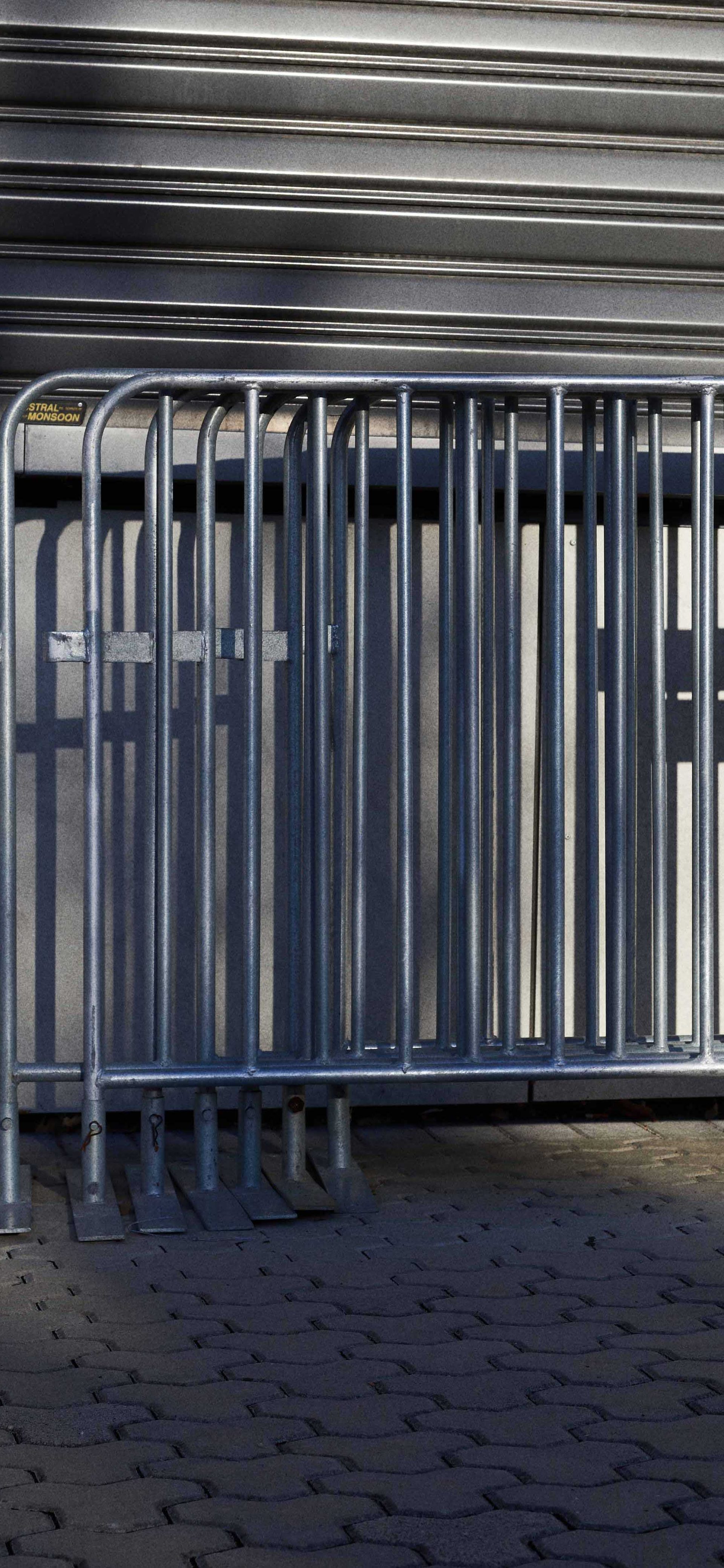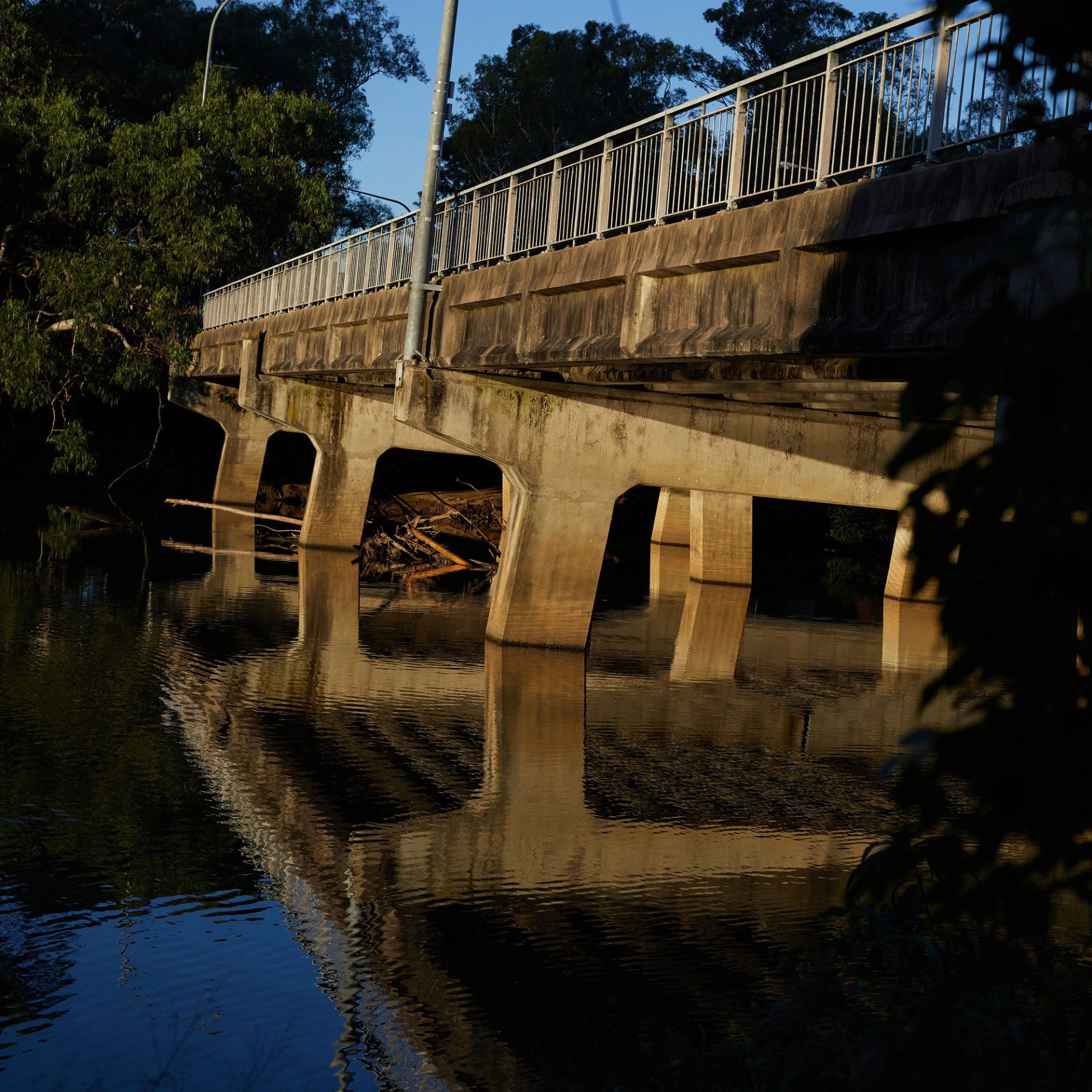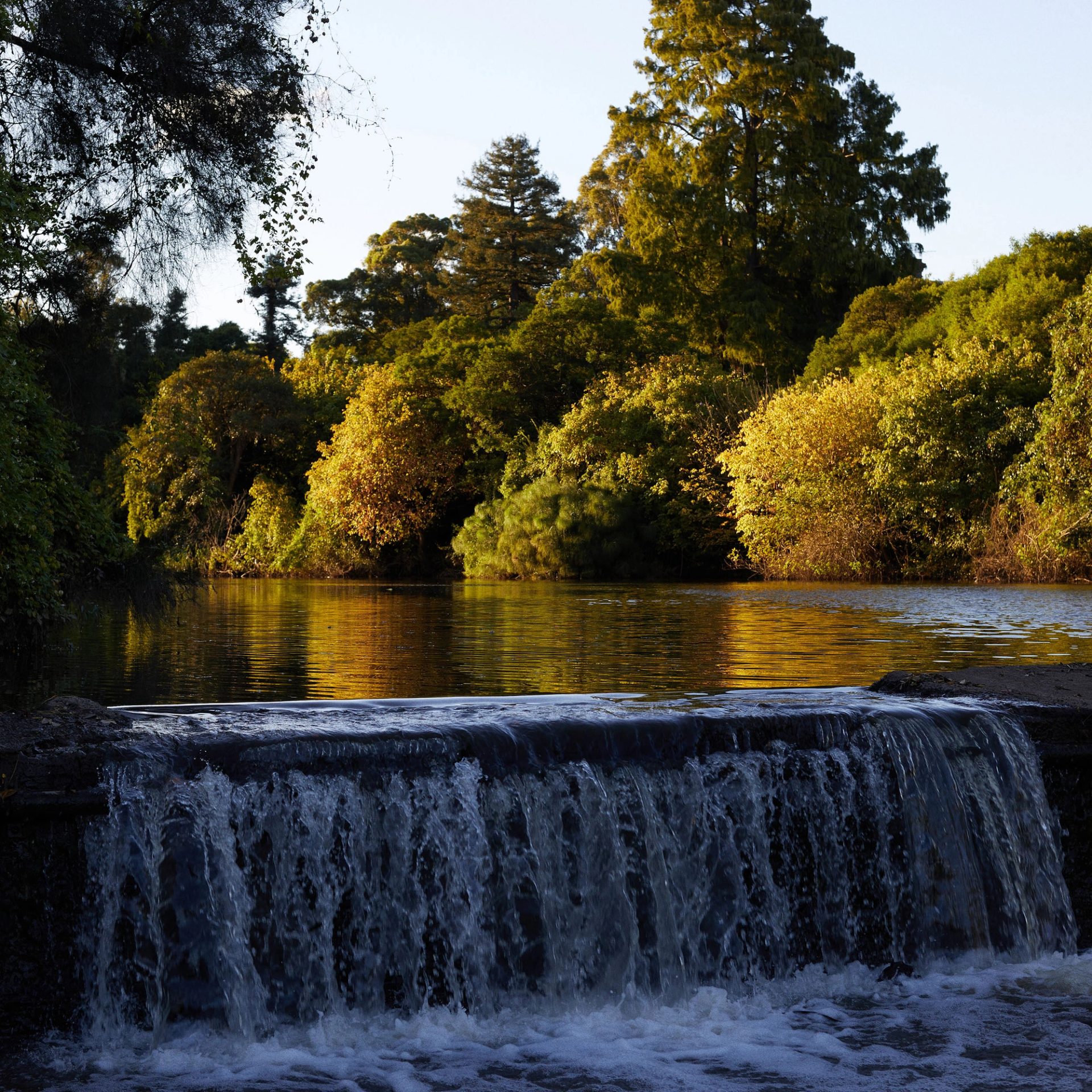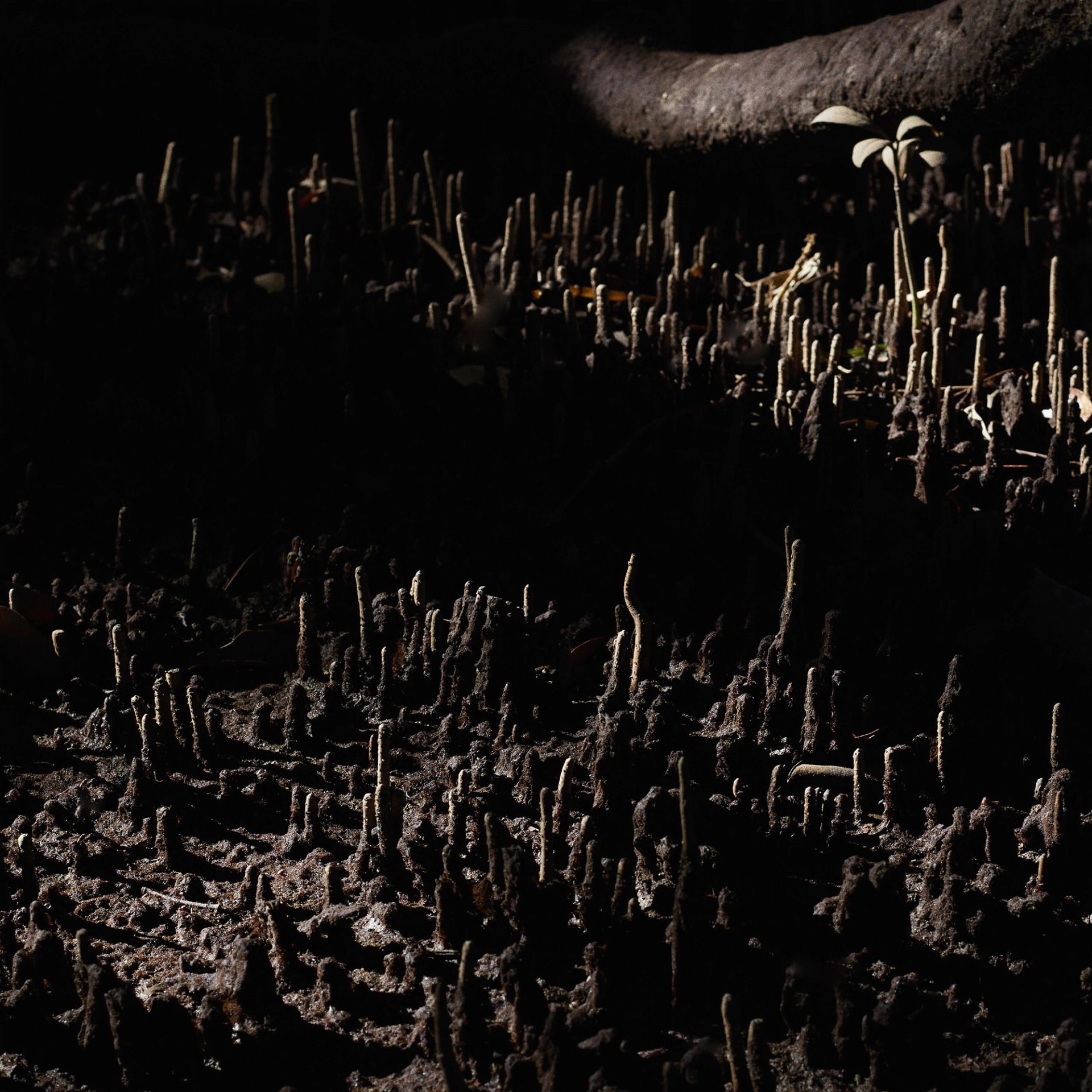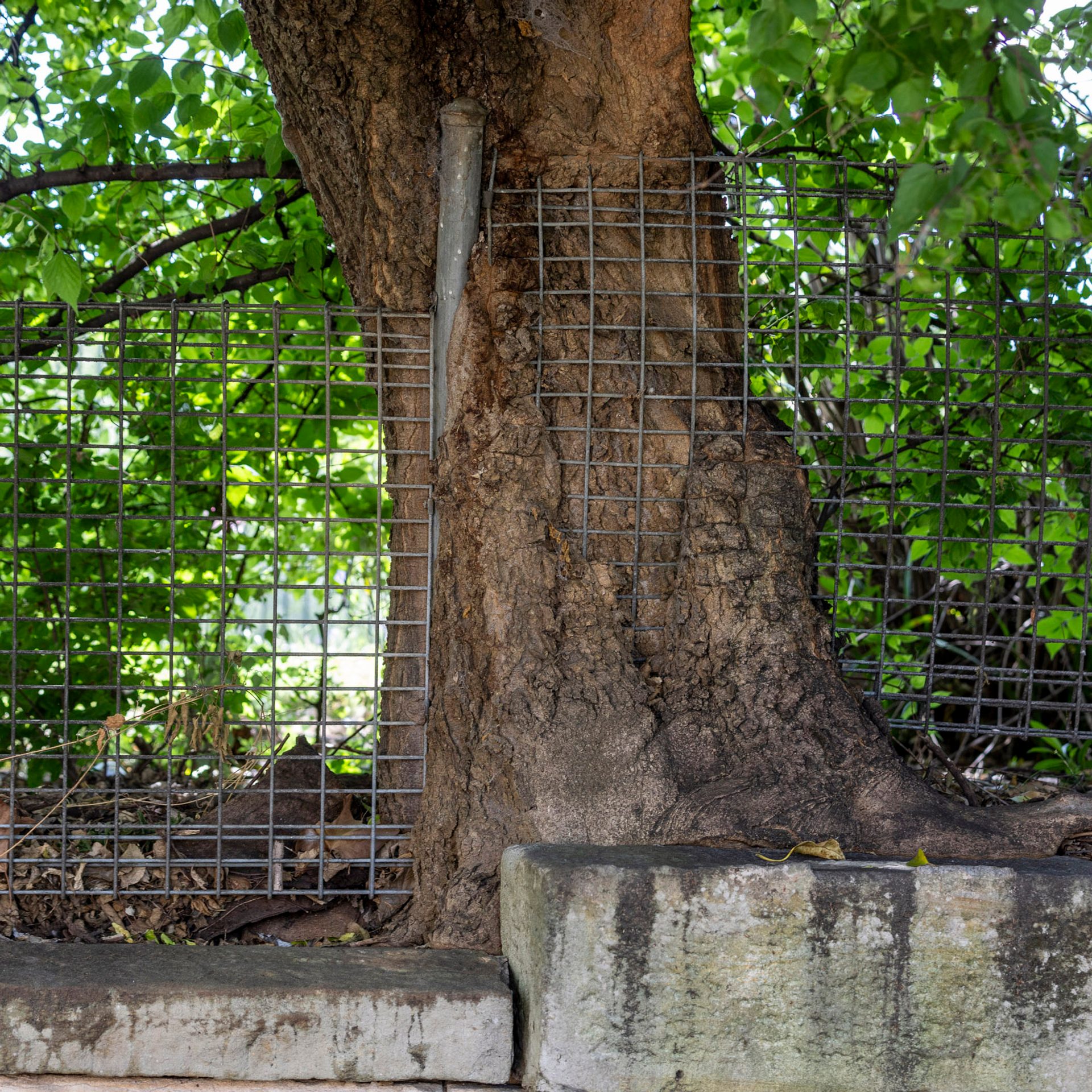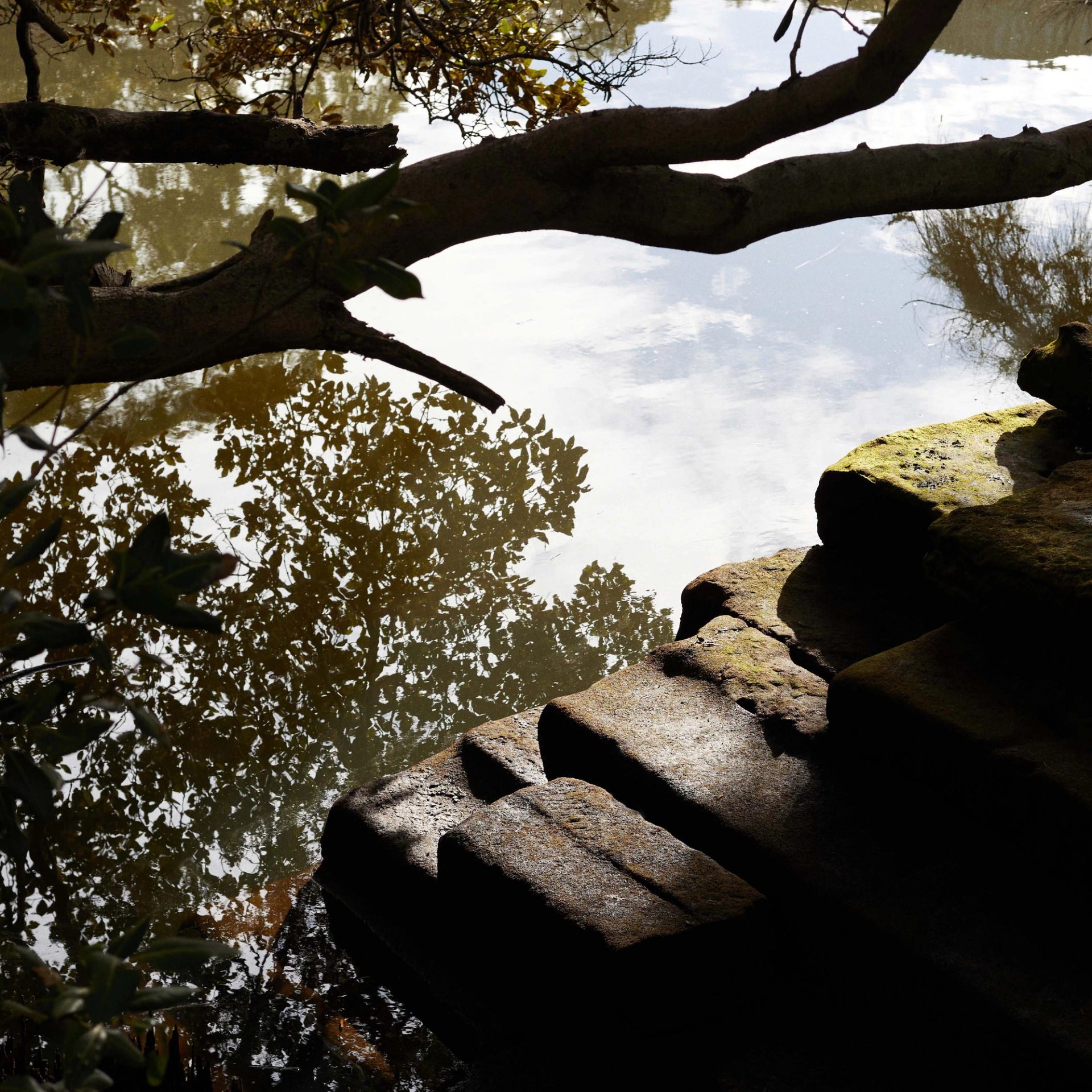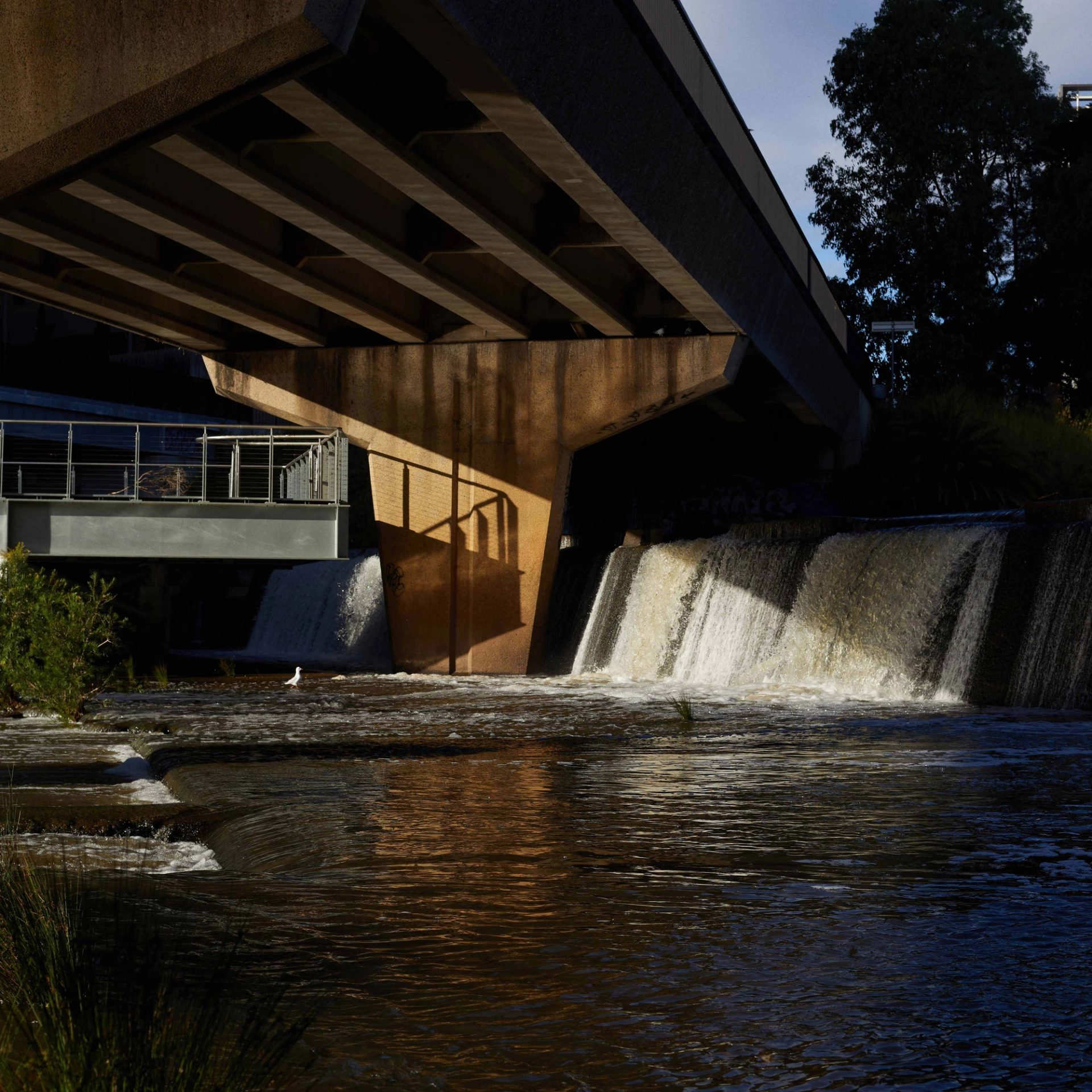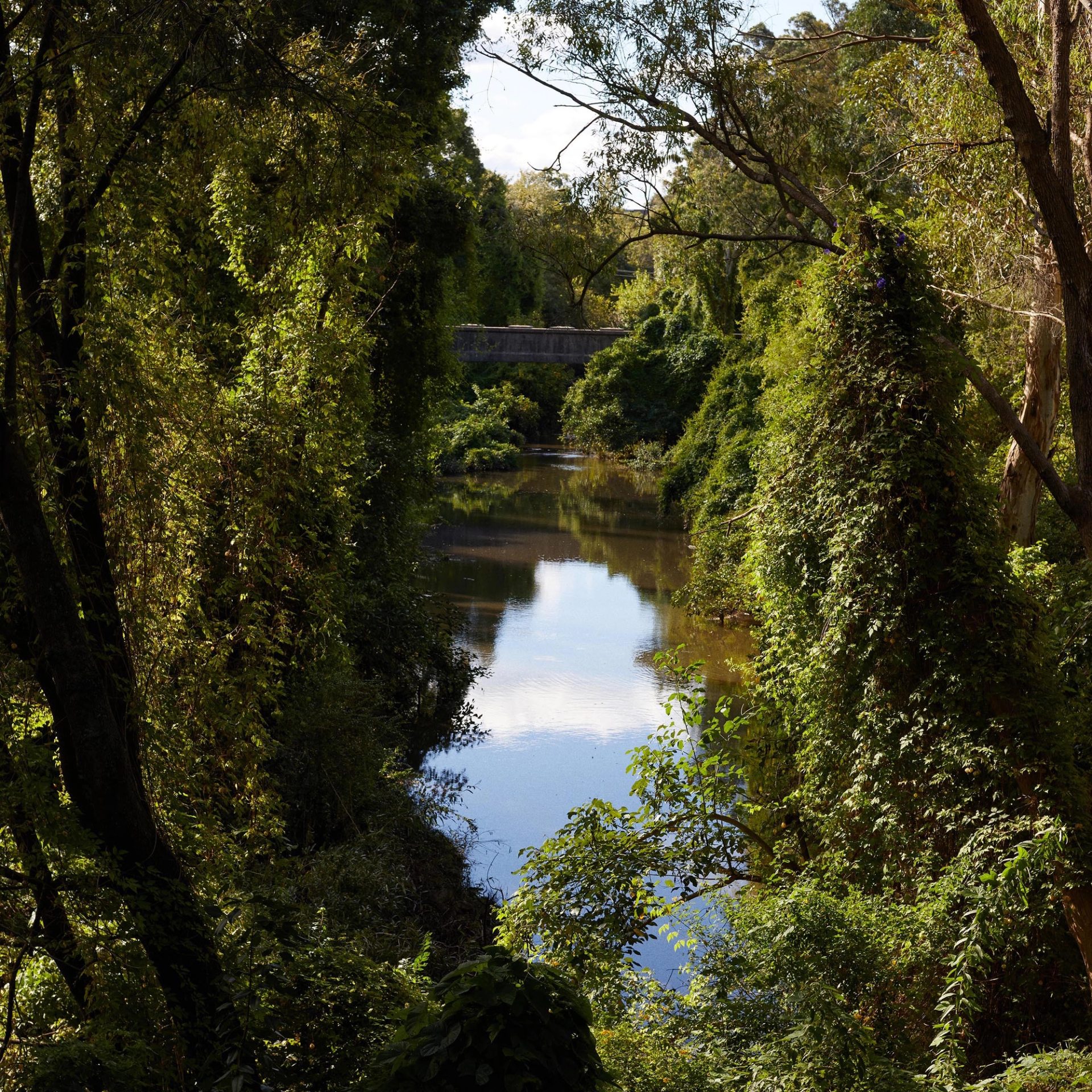River Sport

Anwen Crawford was commissioned by Powerhouse to write this essay for The River, a series of new writing and photography responding to the landscape, communities and histories surrounding the Parramatta River.
River Sport
Noise bursts upon me as I arrive at Warrang – service announcements, diesel thrum. Sunlight splinters the water in a cove that feels too narrow for itself, hoarded in by the built things.
The wake of boats is soapy, they foam up the green, but the springiness of children’s voices countervails the low churn of water. Low churn past the Bridge with its upside-down grin and the baleen mouths of the Opera House sails; past Me-Mel; past Border Force in their matte-black inflatable anchored in the blue off Ball’s Head. Past the incline of Balmain’s nineteenth-century terraces and past Pyrmont’s new-found vapidity, its finger wharves made over as luxury real estate. There’s quiet chatter on the Parramatta RiverCat: my mum and I discuss the evening’s forthcoming AFL match between the Greater Western Sydney Giants and Port Adelaide.
My mum grew up in rugby league land. Her family, which is my family, would make the trip from Lalor Park (a suburb) to Redfern Park (the oval) to watch the South Sydney Rabbitohs. It’s funny how geography can have so little to do with sporting loyalties – or, of course, so much – and I imagine those journeys, parallel to the river, from west to east and back, Seven Hills to Redfern station, on trains nicknamed Red Rattlers for their loose windows. Going in, picnic in hand, and going out again, sunburnt and exultant: those were the Bunnies’ glory days, the late 60s and early 70s, when they won four NRL Premierships in five years. And then nothing, long decades of bewilderment, the fans ebbing away like an old balloon.
It was only recently I asked at Peter Wynn’s sports store if they had any Giants gear. It’s been there pretty much since I can remember, the eponymous Peter Wynn’s, a stone’s throw from Parramatta’s Anglican cathedral, but for rugby merchandise, league and union; soccer at a stretch. (Wynn himself, my mum’s age, played for the Parramatta Eels, and in 1985 in a league Test series against Aotearoa.) My request is not one that a local would make, which is why I’m not a local anymore, if I ever was. Try Rebel, a staff member suggested, sniffily.

A deckhand asks: anyone for Kissing Point? Kids fish from the wharf as we pass it. A cormorant is perched on a buoy and a white-faced heron skims the mangrove roots near Rydalmere, elegant as heraldry.
We disembark at what is now called Olympic Park, which was once the Home Bush estate: Wangal lands turned over by the Crown to the early colonist D’Arcy Wentworth, a son of a branch of Anglo-Irish aristocrats who spent more money than they made. Darcy Street in Parramatta is named after him. Wentworth narrowly evaded being found guilty of highway robbery at the Old Bailey, in London, in the late 1780s; with the law sniffing at his back he took a berth as an Assistant Surgeon on the Second Fleet. From robbery to robbery, one might say, of Wentworth’s career. From silver to land, he held the winning hand.
D’Arcy and his son, William Charles Wentworth, were horse enthusiasts. The elder Wentworth founded a breeding stud on his riverside estate in 1811, while a private racetrack built in 1825 would go on to become a public gathering place, Homebush Racecourse, between 1841 and 1859, before the races moved to Randwick. A special ferry service ploughed the river on race days, while carriages brought crowds from the settlements – Liverpool, Sydney, Parramatta – to the place where cyclists now fizz by us and runners pound the path. The leisure fields of the 19th-century colonists became the sites of 20th-century industry, before being remade again into these (almost) post-industrial greenways.
We walk by the Cricket NSW training complex, which has outdoor nets that nearly kiss the river’s edge and its own oval with a neat picket fence. A little further on, there is still a freight container yard at Rydalmere, and Rheem’s hot water systems factory has, since the 1960s, occupied the site of what was, for a time, a grand colonial mansion named the Vineyard, which was then repurposed as a Catholic school called Subiaco, which was then flattened for Rheem’s carpark in spite of strong objections from the National Trust. There’s a humming around here, and drifting over from the opposite bank is the bleat of earth-moving equipment: a signal, I assume, of yet another riverside apartment development, slick and unaffordable.
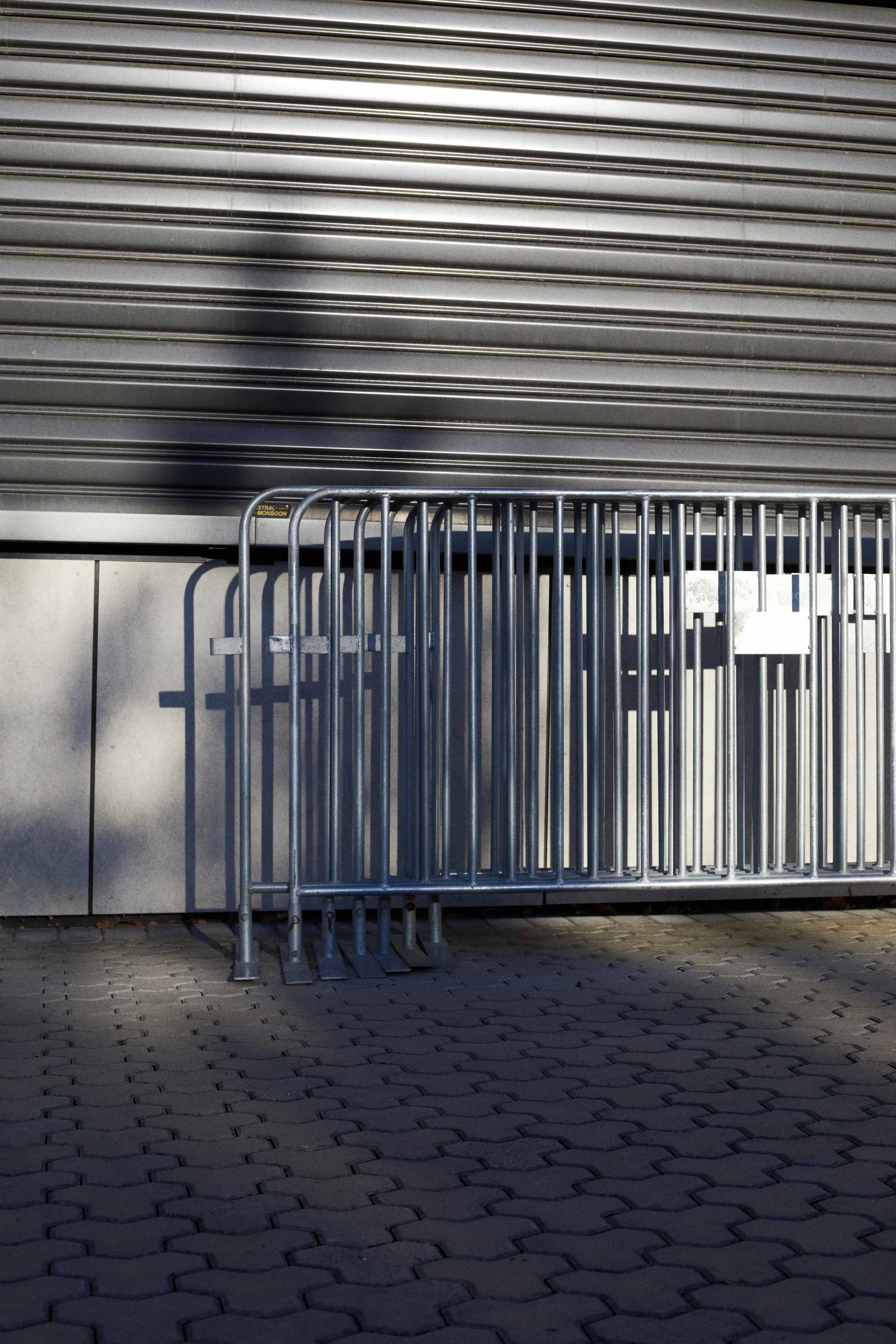
One of my cousins was an outstanding state-level cricketer, though in the women’s game, which still gets less attention than the men’s, and, at the time she played, attracted hardly any remuneration for the players. As kids we would all chuck balls around the carpark of the Jehovah’s Witnesses Kingdom Hall next to my cousins’ house, which was up the road from my grandparents’ house on the site where my grandfather was raised in a dirt-floored cabin, on Dharug Country, Warrimoo. My grandfather was a keen rugby player in his youth; he told me once that many of the club players worked in construction, like he did, as a means of keeping fit. This was decades before the top-level league men’s players were full-time professionals on lavish salaries.
My grandparents left Lalor Park for Warrimoo in 1980. The local rugby league team, the Penrith Panthers, were called the Chocolate Soldiers for their brown-and-white kit. I remember that on the occasion of their first Grand Final appearance in 1990, which they lost, the region’s bakeries from Blacktown to Blackheath were filled with brown-and-white neenish tarts.
The next year, 1991, the Panthers made the Grand Final again. This time they won. My eldest cousin and I were relegated to the far end of my grandparents’ house with the tiny, black-and-white TV, while the rest of the family watched the match from the comfort of the sofa. Defying local pride and the allure of the Panthers’ new stripes-on-black kit, which had debuted that season and instantly earned the team a new nickname, the Liquorice Allsorts, we both barracked for the Canberra Raiders instead. The Raiders, quite a new team then, with a fierce Viking logo and a bright green-and-white uniform that had them called the Pine Lime Splices, were led by Mal Meninga, a legend even in his playing days. Raiders of what, though? Raiders of whom?
Recently I looked up footage of that match, and in listening to the commentary all sorts came back to me: the fact that the trophy, the Winfield Cup, was named after a cigarette company, the names of the other on-field gods of the era. Brad Fittler, Laurie Daley, Glenn Lazarus (‘The Brick With Eyes’), and Penrith’s captain, Greg Alexander. Things I didn’t know I’d known in order to forget them. There’s a poignancy to sports commentary long after its real-time purpose has expired. That time lives again in those voices, and past is present, as it always is.
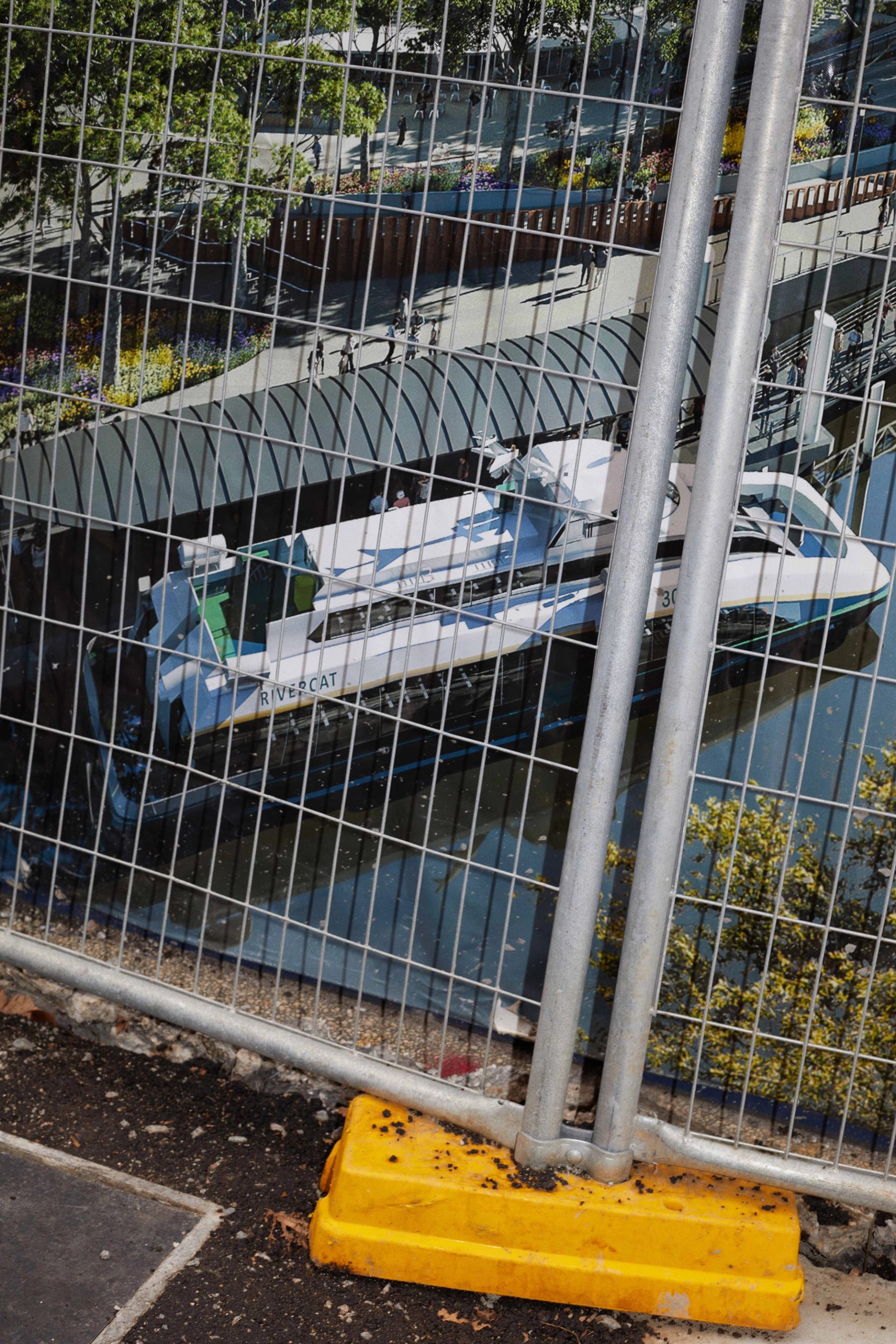
As we walk beside the river my mum recounts a memory of visiting my grandfather’s brother – her uncle – when he lived on a houseboat on the Parramatta River. Vernon was his name, which sounds like verdant, which means flourishing: the mangroves here have thrived in the run-off of the convict farms, the old Homebush abattoir, the factories built on Country and the houseboat of my ancestor, transforming what was once salt marshes. Vernon, who has only ever been a name to me, died in a car accident in the 1960s.
We cross the Silverwater Bridge where the traffic pounds like surf; improbably, a flock of fairy wrens has made a home in the shadow of the pedestrian off-ramp. They are snips of blue amid the fumes and the roar. Improbably, a game of lacrosse is going on by the riverside. Lacrosse! That’s the one that looks like hockey, but with nets on the end of the playing sticks. I thought that it was French, by the name, but when I look it up I learn that lacrosse has ancient origins in First Nations cultures of present-day North America and Canada. The game was witnessed among First Nations peoples by Jesuit missionaries and adapted by them. Over centuries it has arrived here, where, amid the young players’ cries, a butcherbird is singing from the fork of a brush box.

It took me a long time to muster any interest in sport, especially compared to my maternal family, passionate spectators and players all. Each of them descended, in part, from a highway robber transported here on the Second Fleet who, unlike Mr D’Arcy Wentworth, didn’t come from money. The Western Sydney Giants won their match against Port Adelaide, by the way, but lost the next, a preliminary final, by one point to Collingwood, whose current captain is named Darcy.
All times meet always at this place. All the histories of the nation, and all its fictions, cross at Burramatta, at the second site of European settlement after Warrang. The route by water from Warrang to Burramatta today is the same route that the convict boats took to the Parramatta colony. And that route follows an ancient one. I’m from here but not of here – of the transports, heading west, where the whistle blows on the lacrosse game in rugby league land.
First Nations languages are part of oral traditions that have existed for millennia and do not directly translate into the Roman alphabet, as used in English. Therefore, First Nations languages’ sounds have been interpreted in many different spellings. This means that the same words, including language groups and place names may be spelled in two or three different ways. For this publication, we have privileged the spellings of First Nations words the way the authors have suggested unless advised otherwise by Traditional Owners.
Writer
Anwen Crawford is the author of No Document and Live Through This. Her work has appeared in publications including The New Yorker, The White Review and Sydney Review of Books. Between 2013 and 2021 she was The Monthly’s music critic, and in 2021 she won the Pascall Prize for Arts Criticism. She is a long-time zine maker and collaborative visual artist. She lives in Sydney.
The River
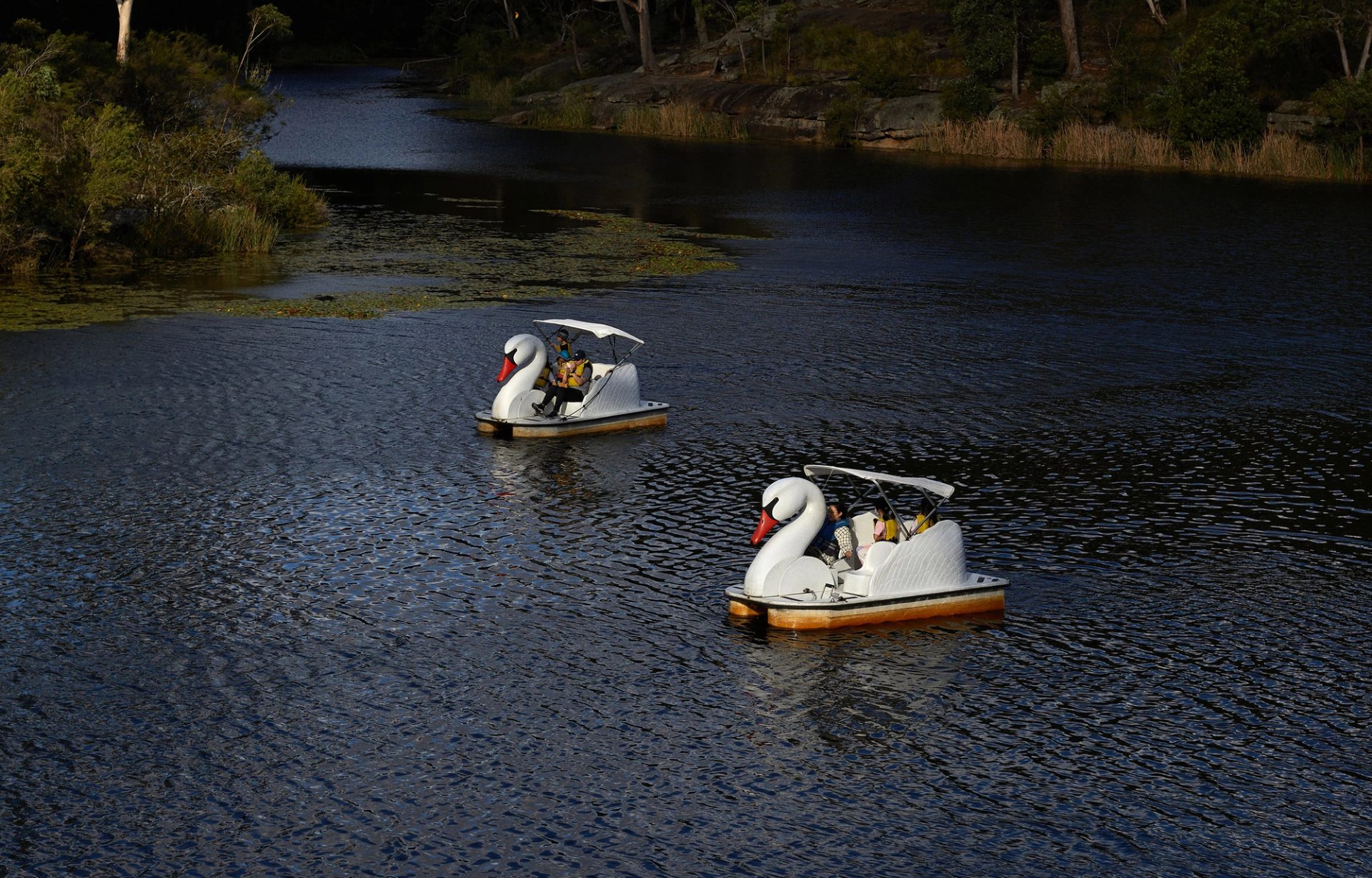
The River is a collection of new Australian writing and photography responding to the landscape, communities and histories surrounding the Parramatta River. Featuring Lachlan Brown, Willem Brussen, Felicity Castagna, Anwen Crawford, Maarama Kāmira, Joseph Mayers, Fiona Murphy, Conor O’Brien, Jiva Parthipan and Vivian Pham.
Writer: Anwen Crawford
Commissioning Editor: Felicity Castagna
Head of Writing, Powerhouse: Jemma Birrell
First Nations Cultural Advisors: Beau James, Nathan Mudyi Sentance
Senior Editor, Powerhouse: Katrina O’Brien
Photos: Conor O’Brien











